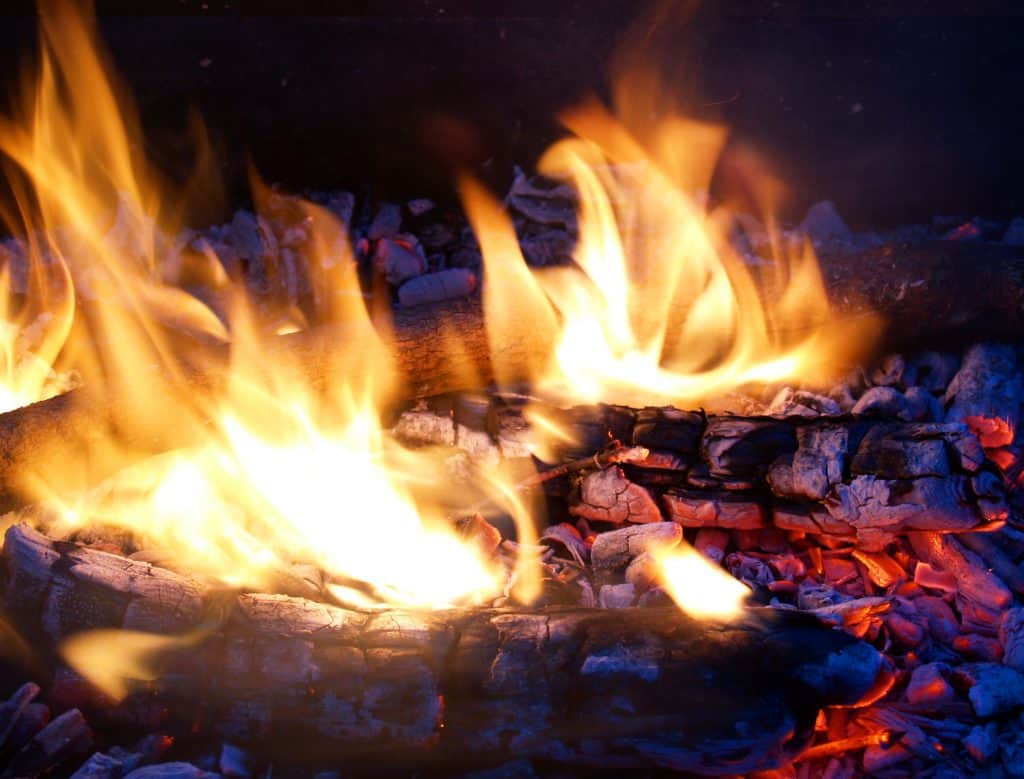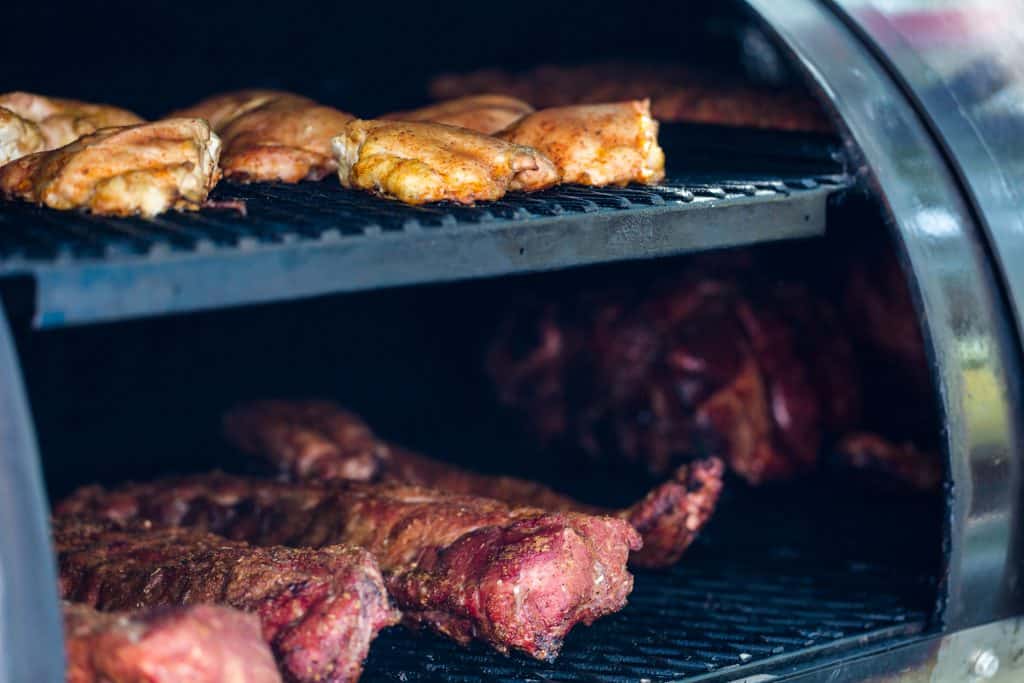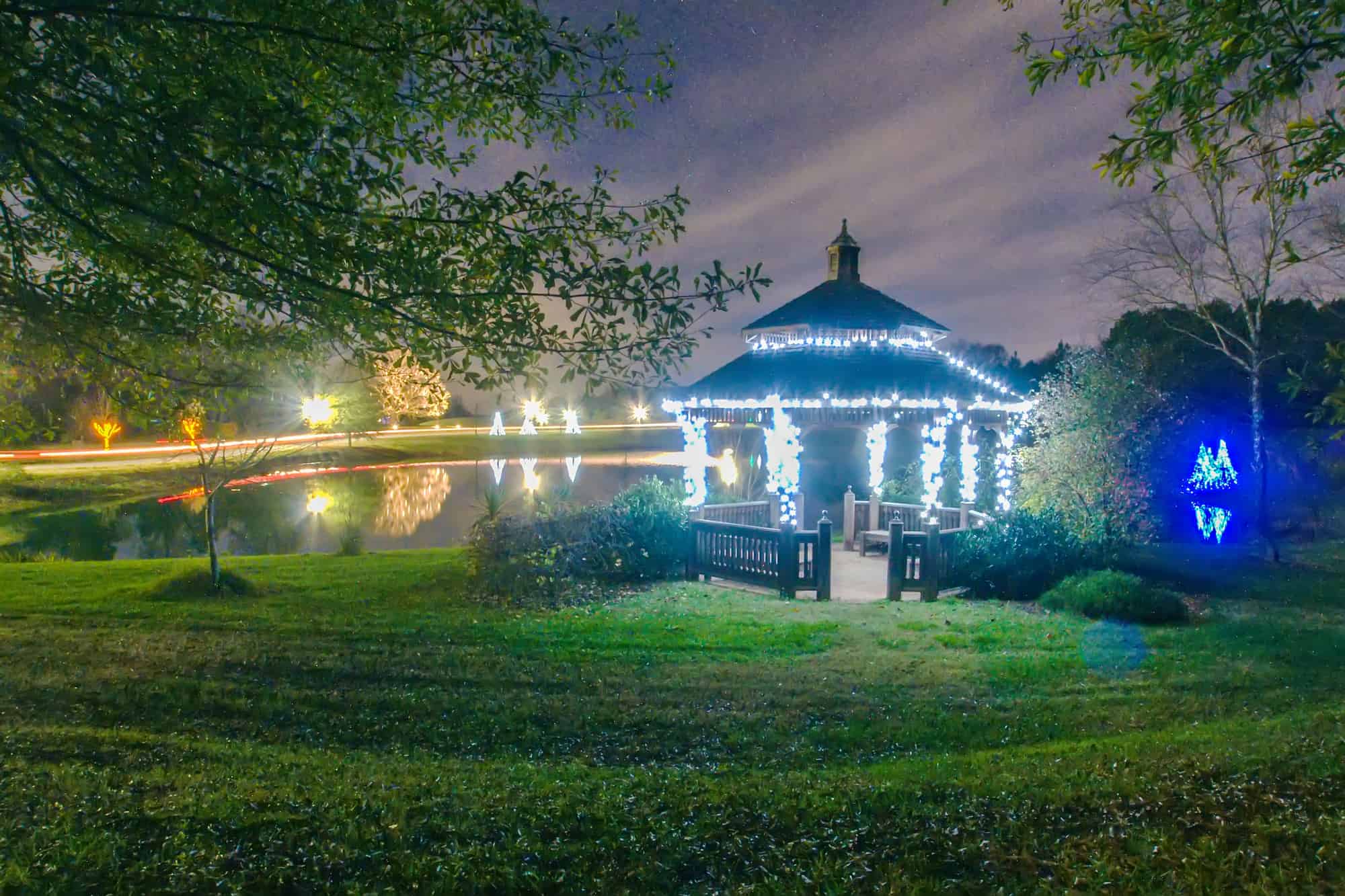The relationship that gazebos and pergola have with patio heaters and fire pits isn’t always obvious. While conventional wisdom says you shouldn’t burn fire in enclosed spaces, gazebos and pergolas aren’t completely enclosed.
With their open sides comes increased air flow, which in the winter months can mean that they need heat the most!
So, can you burn underneath a gazebo/pergola? Before you grab some logs from your firewood pile, let’s review some fire safety principles.
First, let’s take a birds-eye view of the different type of flames we’re looking at.
| Type of Flame | Gazebo | Pergola |
|---|---|---|
| Wood burning fire pit | With caution, a spark screen, and proper ventilation | With caution and spark screen |
| Propane fire pit | Generally safe | Generally safe |
| Charcoal grill | With caution and proper ventilation | With caution |
| Propane grill | Generally safe | Generally safe |
| Pellet smoker | Generally safe with proper ventilation, but unwise | With caution |
| Propane patio heater | Generally safe | Generally safe |
| Electric patio heater | Safest | Safest |
Fire pits
First, the humble fire pit. While extreme caution must be practiced when burning a fire pit on an outdoor rug and under a covered porch, they’re generally safe to use underneath pergolas and (to a lesser extent) gazebos.
Wood burning

Since gazebos have a roof, the smoke from a wood burning fire pit will be more problematic. Ensure adequate ventilation when burning, as the produced smoke can stain surfaces. Not to mention, the smoke is hazardous to breathe and can result in sickness (even death).
A spark screen is also a necessity, as stray sparks can start fires on wooden surfaces.
Pergolas are less of a risk — you need to still employ spark screens, but the lack of a proper roof ensures better airflow. Unfortunately, this increased airflow also means that sparks from your wood burning fire pit can ignite more quickly.
In addition to the spark screen, look into getting a fire pit mat to protect the gazebo floors.
Propane
Propane fire pits are generally much safer than their wood burning cousins. While risk still exists, the fire is generally more controlled and produces less smoke. Proper airflow is important, but the open walls of gazebos and pergolas are generally adequate.
The only other thing to mention is that when burning propane fire pits underneath gazebos, propane soot can accumulate on the roof above. Luckily it’s easy enough to clean — simply use a magic eraser or similar cleaning tool.
Grills
Both charcoal and propane grills are generally safe to use underneath pergolas and gazebos. Charcoal grills carry a modestly higher risk, similar to what I outlined above. Also, just like wood burning fire pits, be sure to allow proper ventilation when using a charcoal grill underneath a gazebo.
I’ll simply note once more that “safe” here is relative. Risk is assumed any time someone uses a charcoal grill — be sure to follow correct grill safety.
Just as with propane fire pits, propane soot can accumulate on gazebo roofs when burning for prolonged periods. Regular cleaning is necessary.
Smokers

While smokers are technically as safe as charcoal burning grills per burn-hour, I would advise against using them underneath gazebos. Smokers burn for many consecutive hours and the risk of fire increases linearly with how long you’re burning.
Additionally, the long exposure to smoke can definitely stain your gazebo roof.
With that being said, it’s perfectly safe and appropriate to use smokers underneath pergolas. Much like with wood burning fire pits, the increased airflow ensures proper ventilation and removes many of the concerns had with gazebos.
Patio Heaters
Finally, we come to the mighty patio heater. Patio heaters are great ways to extend your outdoor season by a few months, but how safe are they use underneath gazebos and pergolas?
Propane
While propane patio heaters can be implicitly dangerous (especially when not used properly), they’re not substantially more dangerous underneath gazebos or pergolas. Watch the flame’s and heat shield’s clearance to the surrounding wood and you should be fine.
Propane soot can definitely occur, but I established that as a trivial problem at worst. By being easy to clean, it’s also easy to ignore.
Electric
Electric patio heaters are the safest kind of heater to use underneath gazebos and pergolas alike. Without an active flame, the only thing to worry about is the ambient heat igniting flammable materials.
By keeping a safe distance between the electric heater and flammable material you keep your electric heater as safe as it can be. Easily accomplish this by mounting the electric heater on the gazebo or pergola itself and facing the heat output toward the center of the structure.
I’ve written extensively about the best electric heaters for small spaces, so any of the heaters on that list will serve you well.
Tips for Fire Prevention
I’m no firefighter, but I can tell you that there are a few things you should do to prevent a fire from occurring in your gazebo or pergola. These are my tips for fire prevention:
- Install a fire pit screen on fire pits as a first line of defense against stray embers.
- Use a fire pit mat to block heat from surfaces and catch embers that may escape.
- Have an inspected fire extinguisher close by in case the worst case happens.
- Keep your heater, grill, or fire pit in good working order by regularly inspecting and maintaining (following the manufacturer’s recommendations).
Final Thoughts
While no one can completely eliminate risk, I hope this guide gives you a good foundation making calculated decisions.
As I said (a few times, I think), your situation may be different than the average! Always follow the manufacturer’s recommendations and be sure to read the CDC guidelines on general fire prevention.
By taking a few extra steps, and acting with purpose, you can avoid making costly decisions that can harm you and your loved ones.

